Origin Live Speakers introduction
THE ASTUTE LOUDSPEAKER
Discover the value of real music
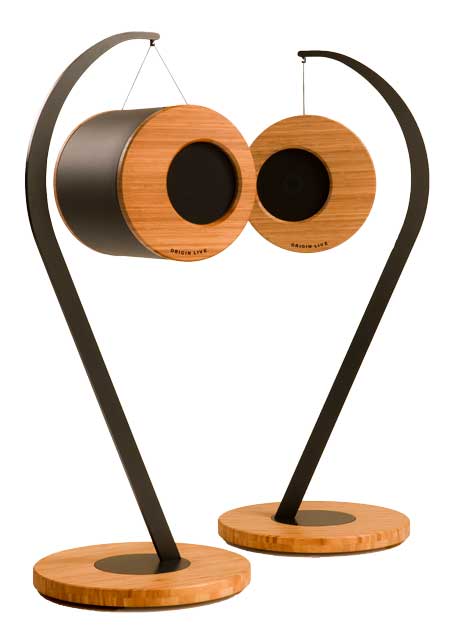
"Sound as revolutionary as they look ...It's as though I'm listening to my favourite music, source and amplification with a secret veil lifted .... Every visitor to your home is likely to marvel at the Astutes when they are silent and even more so when they make dynamic music" HI FI CHOICE Read more
"went to another dimension, I could listen all day long. The Autobahn track blew me away – Fantastic!” HARRY Read more
Smart Choice
A unique and highly distinguished loudspeaker, the Astute ranks as one of the finest transducers money can buy. The result of many years of research into the subject, it harnesses all the design resources of Origin Live.
Choosing the right loudspeaker for yourself, your system and your listening room is a difficult and complex task, with many variables you need to consider. If you don’t give the subject proper thought, you could find yourself with an unsuitable or underachieving product.
For example, what about speaker size? Large high end designs produce scale, dynamics, bass depth and authority, but their size can be imposing. They also suffer bass problems due to low frequency interactions. Smaller speakers on the other hand usually present a cleaner sound with more detail, but seriously lack dynamics and low end depth.
Having spent over twenty five years considering these dilemmas, our new and innovative approach yields stunning results. If you want a genuine advance over the limitations of current designs, you'll find our analysis both enlightening and revolutionary. This is embodied in the Astute speaker which sounds superb, looks good and is highly versatile. It combines leading ideas in an entirely new way.
The Value Of Music
Listening to music is one of life's great pleasures. Close to our sense of smell, music has the strongest power to evoke mood changes and bring back memories. We've all had the experience of hearing a song we loved in our youth. Immediately, we may think of a first love, friends we knew and experiences we haven’t remembered in years.
Listening to music causes the brain to release dopamine, the ‘feel-good’ hormone that restores logic and enables us to concentrate. It can literally change your heartbeat, and your life – for those feeling lethargic then upbeat, high tempo songs can raise energy levels. Classical music or jazz will help you unwind properly after a busy day. Further proof of the benefits are provided by people like Olympic Gold medalist Dame Kelly Holmes, who in her biography describes how listening to a theme song helped her excel in sport.
Where would films be without music to capture the mood? This is so marked that film producer George Lucas believes great sound conveys more realism than picture quality. Of course most of us have got so used to inferior sound that awareness of it's limitations only occurs at a subconscious level – try shutting your eyes and listening to your television. Would you ever confuse the sound you hear with a real person speaking in the room? This is one of the differences between watching remotely and being there.
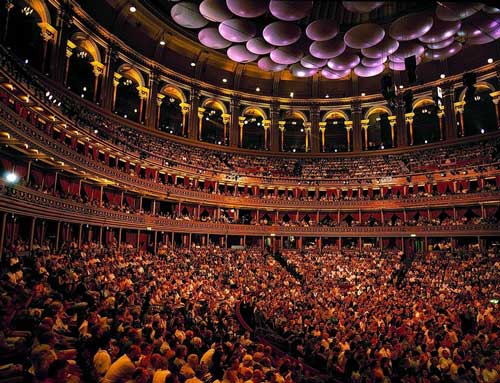 Why Have Great Sound Quality?
Why Have Great Sound Quality?
The taste of a wine or the beauty of a painting are intangibles that cannot be quantified. Likewise, hearing music through a better system, takes your enjoyment to a higher level. Sound quality is often taken for granted, overlooked by the vast majority of people. Popular opinion believes that most speakers sound great and there’s little to choose between them. This belief is instantly shattered by any good demonstration. It comes as a revelation to even the most casual listener, that there is a world of difference between mediocre speakers and the top half a percent. Despite this, the majority of successful people have upgraded everything else in their lives but still own a very average audio system…
You need only think of the difference between High Definition film verses standard. I well remember watching the final race of an Olympic sailing event that was fought out in near gale force conditions. The low definition film shown on television reduced the look of the sea to a lumpy millpond, devoid of driving spray and the foaming ferocity of huge wave caps. Words cannot convey the total absence of drama these pictures showed. The same is true for great sound quality, yet you really don't need golden ears to hear the difference. For example in 2013 The Albert Hall showed films such as Star Wars, but with a difference - the soundtracks were played by a live orchestra. Comments from the audience stated that the difference was stunning. They never imagined how much more enjoyable a film could be because of the live feel.
So why does the quality of sound reproduction have such a massive influence on our musical experience? Surely the ability to identify the song is enough? We'll talk about brain activity shortly, but ultimately experience is the thing that will convince you. Auditions of various equipment will reveal strong preferences.
Sound quality is important because the brain knows what it likes to hear from music. The problem with normal hi-fi is that your brain is constantly filling in the gaps for reality. In other words it helps you imagine you're hearing the real thing. This form of “error correction” is going on all the time, in much the same way that a microprocessor is constantly correcting disc errors thrown up by a CD player.
Interestingly, the brain is helped by visual cues. For example one of our staff at a hi-fi show noticed how watching a video of a singer, made the sound seem more real. As soon as he closed his eyes, the flaws of the reproduction were immediately apparent. The brain needs all the help it can get to translate and make sense of poor sound. This problem is significant because error correction is work for the brain which it prefers not to do. It quickly gets tired and your level of enjoyment is nowhere near what it could be. The Origin Live Astute loudspeaker addresses this problem with sound that you can enjoy to the full.
Auditioning is of course the only smart way to appreciate what better sound quality gives you. It's worth noting however that many High Street hi-fi shops are like visiting car showrooms full of small family hatchbacks. Salespeople with little else to offer will try and convince you that this is all you need. There’s nothing wrong with hatchbacks of course, but more is possible if you so wish…
How To Evaluate Speakers
Robert Harley (Editor-in-Chief of the Absolute Sound Magazine) has stated, "the world abounds in poor-quality, even dreadful loudspeakers. What's more, some very bad speakers are expensive, while superlative models may sell for a fraction of an inferior model's price". This raises the question of how you weed out the underachievers and find the rare gems that outperform the market. There are beliefs about speaker choice that offer a great sense of security for those without inside knowledge. To save you making costly mistakes, forewarned is forearmed…
Brand?
Many illustrious British speaker brands have now gone out of business, but sometimes their names have been taken over by multinational conglomerates that don't care about quality, and seek instead to exploit the name. The public still perceives the brand as state-of-the-art, whereas they can be among the worst sounding around – so the name in itself is no guarantee of quality.
Popularity?
Sadly, many people are oblivious to the huge differences that exist in sound between loudspeakers, and instead tend to choose based on brand name, ease of use, price and size. The inevitable consequence is that genuine performance is also of little importance to manufacturers - just claiming ‘great sound’ is enough for most people. For example, at the Gadget Show I noticed a speaker that was a mere two inch cube with a humorous green furry finish. This tiny object played music the same way as piped music coming from a telephone. A large adjacent label had the magic words ‘High Sound Quality’. This type of nonsense is widespread, and the outcome is that many end up with a product that fails to meet its primary purpose – playing lifelike music.
Drive units?
It's natural to assume a larger speaker crammed full of drivers should sound better than a smaller cabinet with only a tweeter and woofer. Multi-driver speakers look impressive and therefore command higher perceived value. Manufacturers are all too aware of this perception so it's no surprise to see so many such products – but the truth is that sound quality isn’t related to the number of drivers, and often two-driver designs are far more musical than multi-way speakers.
Multi-driver designs face complex technical issues which are seldom properly sorted out due to the costs involved. Drivers all look much the same on the outside, so massive cost savings are forced on the build quality – including low power magnets, cheap internal structures and poor tolerances in critical areas. Other perils include difficulties in merging drivers seamlessly, increased cabinet resonance and drivers interacting with neighbouring drivers. Bigger isn’t always better.
The most significant problem with multi-driver speakers is a confused sound, and loss of imaging due to wave interference patterns. Sound waves of the same size and frequency interact with one another to create distortion. The higher the number of drivers, the worse this situation gets, especially with those that operate at the same frequency and to a lesser extent by more crossover regions between drivers. Very often, less is more.
Finish?
High quality veneer and surface finish has a large influence on perception. Instinct tells you that this sort of meticulousness must carry through to the rest of the design and the sound. But ‘never judge a book by it's cover’ is seldom more true than when it comes to loudspeakers. A beautiful exterior commands a high premium, but all too often hides multiple unseen flaws such as:
Low grade capacitors, inductors and low power resistors – all with slack tolerances.
Value
The real value of a better speaker is unseen – it’s the costly research, hard won experience, advanced design and high quality components. Designers need to have pitch-perfect hearing and a musical ear, but surprisingly this is often far from the case. True musical value cannot be taken for granted, despite what the exotic materials and pricey finishes may suggest. Component quality is hard to differentiate without insider knowledge, as they all look much the same. For example, the same value capacitor can cost either £0.30 or £250 each.
The unseen tweeter used in the Astute has an extraordinarily high efficiency of 112dB – It would take nearly sixteen conventional tweeters to achieve this level of dynamic capability. Seeing so many tweeters in a cabinet looks impressive and indeed such designs do exist. The resulting sound is dynamic alright, but also confused thanks to the multiple drivers.
- What do non-audiophiles think about the speaker's visual appearance?
- How does one make sense of the huge divergence in design philosophies and know which is right?
- What gives speakers a performance edge?
- Does the speaker represent value for money?
Practical benefits include:
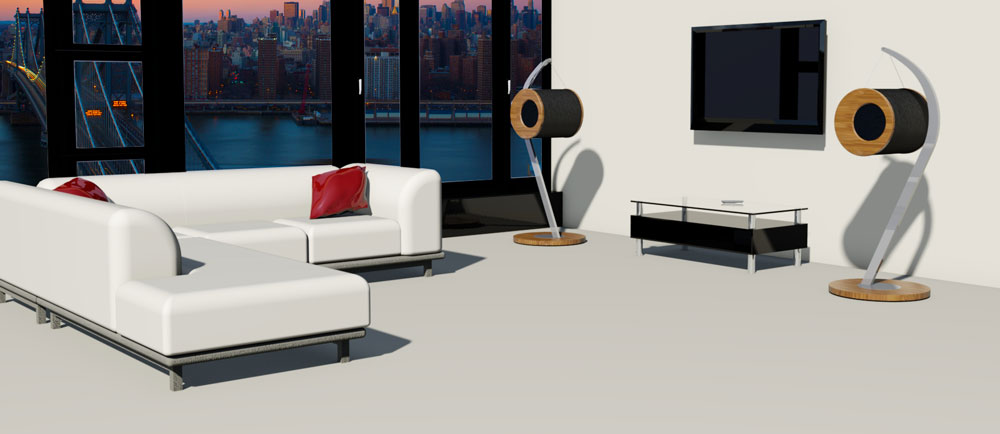
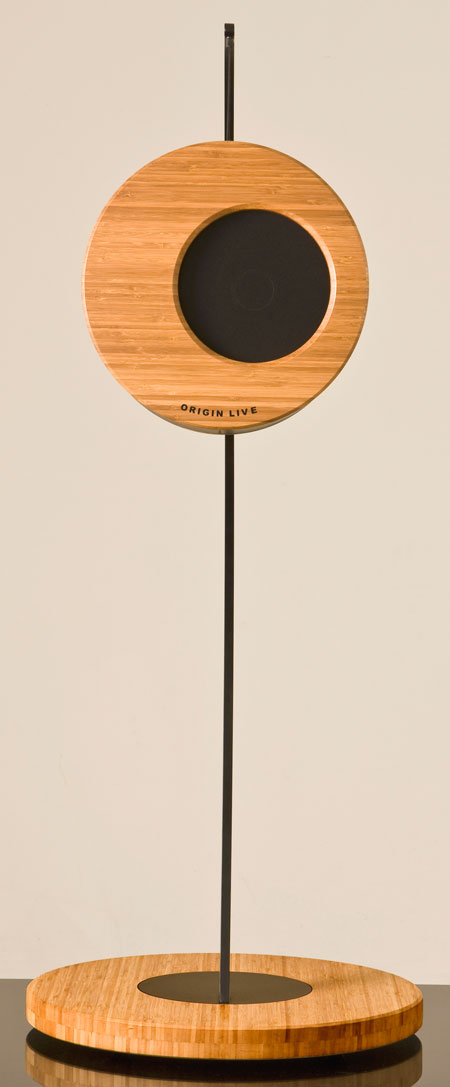 INNOVATION & DESIGN PHILOSOPHY
INNOVATION & DESIGN PHILOSOPHY
Combining New Ideas With Existing Technology
The Astute introduces new ideas of controlling energy, drawn from our long experience of turntable and tonearm design. This unique approach allied to our special expertise in this field delivers a huge leap in performance.
In the days of Leonardo da Vinci, apprentices started out by copying previous masters to gain a proper understanding of art. In the same way, the complexities of speaker design necessitate solid foundations in established principles. Origin Live has trodden the well worn paths of tradition and produced top conventional speakers in the past, winning a Hi-Fi World magazine group test and five-star verdicts in reviews.
This experience highlighted frustrating limitations in classic textbook designs. It took years of discussing certain issues for solutions to slowly present themselves. Sometimes this happened by careful observation of more unusual designs, sometimes by ‘Eureka moments’. There came a time when testing became a matter of compulsion. The results are embodied in the Astute loudspeaker with advances in:
Dynamics: A leading reviewer wrote in a revealing comment, "Why must domestic speakers sound like damp sponges if you've just come back from a live concert or gig?" This is a reference to the poor dynamic capability of most hi-fi systems to capture the speed of real music. Dynamics are not readily understood and even harder to quantify. You will read that many speakers are ‘dynamic’ but all too often, this is by a relatively small margin and referenced to the mediocrity of the mass market. The dynamics of the Astute are nearly off the scale - many times in excess of most high end designs. This allows you to recreate the energy, scale and thrill of the original performance.
Sound propagation: There is a narrow hotspot with most speakers where they sound at their best. Interestingly, Astute sounds much the same wherever you are in a room (better than omni-directional speakers). This is a by-product of excellent dynamics. Treble especially, tends to dull rapidly after bouncing off walls or over distance unless it has realistic dynamics.
Clarity: Proper resonance control is extraordinarily complex and rarely achieved. One trend in vogue at the moment is the solid metal front baffle with massive internal bracing of the cabinet using metal or carbon fibre. This is an obvious answer and appeals immensely to common sense until other approaches are discovered to work better.
Bass reproduction: Unlike most systems, Astute employs a perfectly integrated, single, high powered point source for bass reproduction. Nobody talks about the severe bass wave interaction of most two-channel systems where you have two bass drivers spaced around ten feet apart. This interaction produces much higher distortion than room standing waves. The wavelength of a bass note at 100Hz is ten feet so you can see why this is the point for larger interactions to start taking place. We are talking of sound waves forming at over double or half what they should be! This nasty problem is ignored and mostly unrecognised, it nevertheless destroys true bass definition. The irony is that most single sub-woofer systems have a bad reputation due to poor execution and appalling integration - the Astute has learned from these problems and corrected them by starting the bass roll off at 100Hz with a steep crossover at 85Hz rather than the gradual roll off from 40Hz of most systems. This eliminates the worst of bass interaction between the speakers. A fully adjustable active subwoofer then handles frequencies below 85Hz.
Positioning: Because the bass output of the hanging Astute is so low, there is very little of the bass reinforcement normally experienced when a speaker is placed near a rear wall.
Set-up: Turning the adjustable volume of the subwoofer up or down solves many room integration problems. Using a subwoofer also provides fabulous control over tonal balance regardless of room acoustics. People have widely different preferences with regard to bass output and the Astute system provides real versatility in this important aspect. In addition to bass control, Astute also offers high frequency level adjustment. Experience shows this is essential as different rooms have vastly different levels of soft fabric and the proximity of side walls also has a major impact . Instructions are provided on how to get the best out of the speakers in any context.
Ease of drive: Thanks to its very high 91.5dB efficiency and easy 6 ohm load, Astute can be driven by valve amplifiers rated as low as 8W per channel. This is important because high power amplifiers necessitate numerous compromises unless you are willing to spend a great deal of money. Even then compromises are made . The superiority of low power amplifier designs that can operate in Class A with zero feedback can only be realised with a very small number of high efficiency and easy load speakers. However many have made the mistake of thinking high efficiency alone is enough, the impedance load is even more critical.
Coherence: Because the bass is powered by its own built-in amplifier, the remaining frequencies benefit enormously from using amplifiers with finesse rather than sheer muscle. Even low powered amps drive the Astute with unbelievable clarity, free from the grain that high powered amps usually manifest.
Pin-point imaging: This characteristic involves so much more than just dispersion, so we’ll look into this in more detail later – see the expanded presentation on the side menu.
Other key facets of the Astute include:
Why not make things miniature?
Increasing Performance With Style and Minimal Imposition
Does Hanging A Speaker Really Outperform Other Approaches?
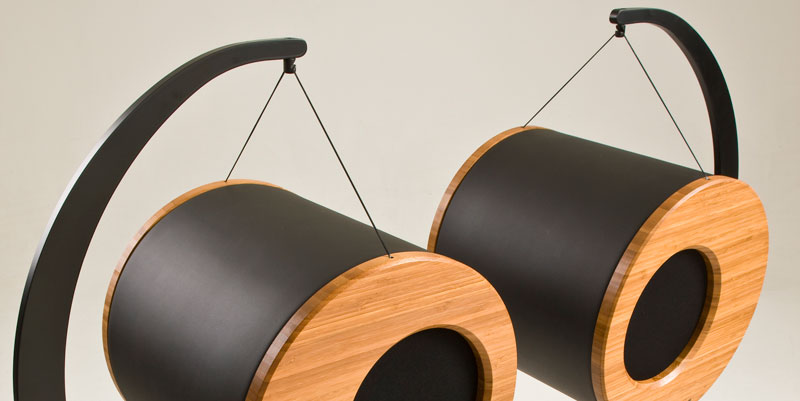
DESCRIPTION OF ASTUTE SYSTEM
- A pair of cylindrical cabinets, each housing a coaxial driver – these work from the upper bass to the treble (85Hz to 20kHz)
- A single subwoofer which produces non-directional low frequencies below 85Hz
- A pair of brackets or stands to hang the two cylindrical cabinets
Each of these items has a range of options available
Upgradability
Finish Options
Subwoofer: (from £450 and above)
Summary
The technical advantages and inspiration behind the Astutes are described more fully in “Expanded presentation"
Arrange An Audition
If better speakers are something that appeals to you, why not arrange for an audition of the Astute? Please phone +44 (0)2380 578877 or e-mail us (link at top of this page) if you are interested in upgrading your listening experience. We can then arrange an audition either in your own home or at a local audio specialist shop.
ASTUTE 12 SUB-WOOFER
To complement the Astute we offer the Astute 12 subwoofer. This extends the frequency range of the system down to 30hz (-3dB) providing thunderous lows while retaining near perfect speed and accuracy. At the heart of this design is an ultra low distortion, high efficiency woofer providing great control and musicality.
With carefully optimised cabinet and driver design, the Astute 12 subwoofer integrates seamlessly with the Astute. Inputs to the Astute 12 Subwoofer are either XLR or RCA (either stereo or mono).
Other brand Subwoofers from £450 can also be used providing they are active and have:
- variable gain,
- +/- 180 phase control,
- variable crossover (50-120hz).
These allow you to tune the subwoofer perfectly to any room, and any taste.

